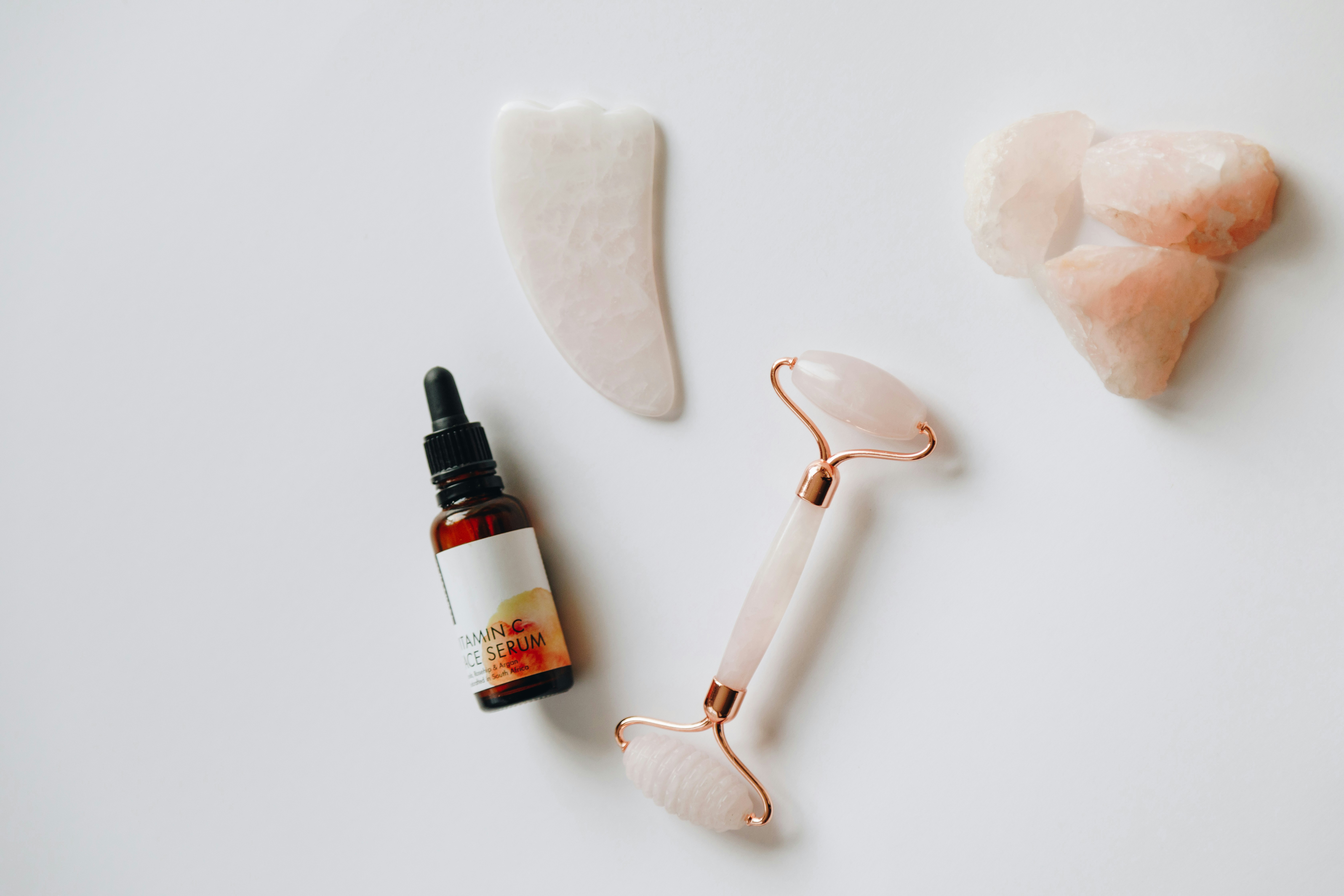Unlocking the Secrets: Salicylic Acid and Niacinamide Compatibility

Navigating the world of skincare can be a complex task. With a myriad of active ingredients available, understanding their compatibility is crucial.
Salicylic acid and niacinamide are two such ingredients. Both are lauded for their benefits in blemish control, but can they be used together?
This article aims to shed light on the compatibility of salicylic acid and niacinamide. We delve into the science behind these ingredients and their interaction.
We will also explore how to effectively incorporate these ingredients into your skincare routine. This includes understanding the role of pH levels and product formulation.
Whether you're a skincare enthusiast or a professional, this comprehensive guide will provide valuable insights. Let's embark on this journey to better skincare knowledge.
Understanding Salicylic Acid and Its Role in Skincare
Salicylic acid is a beta-hydroxy acid (BHA) renowned for its exfoliating properties. It is oil-soluble, allowing it to penetrate deep into the pores of the skin.
This unique property enables salicylic acid to dissolve the debris and sebum that can lead to acne. It is often found in cleansers, toners, and spot treatments, making it a versatile ingredient in blemish control.
However, salicylic acid is not without its challenges. It functions optimally at a low pH, which can lead to potential interactions with other skincare ingredients. Overuse can also lead to skin irritation and moisture loss, necessitating careful use.
Despite these challenges, salicylic acid remains a popular choice for those battling acne and blemishes. Its ability to clear pores and reduce sebum production makes it a valuable tool in any skincare arsenal.
Niacinamide: A Multifaceted Skincare Ingredient
Niacinamide, a form of Vitamin B3, is another powerhouse in the skincare world. It offers a range of benefits, from reducing inflammation to regulating oil production.
Unlike salicylic acid, niacinamide is water-soluble and works on the skin's surface. It is stable across a broader pH range, making it compatible with a variety of other skincare ingredients.
Niacinamide is commonly found in serums, moisturizers, and masks. Its anti-inflammatory properties make it particularly effective in reducing redness and inflammation associated with acne. It can also help to lighten post-inflammatory hyperpigmentation, improving the overall tone and texture of the skin.
However, the true strength of niacinamide lies in its versatility. It not only aids in blemish control but also has anti-aging properties. By enhancing the skin barrier function, it can help to retain moisture and protect the skin from environmental damage.
In summary, niacinamide is a multifaceted skincare ingredient that can benefit a wide range of skin types and concerns. Its compatibility with other ingredients, including salicylic acid, makes it a valuable addition to any skincare routine.
The Compatibility of Salicylic Acid and Niacinamide
The question of salicylic acid and niacinamide compatibility is a common one in skincare circles. The concern primarily stems from potential pH level interactions between the two ingredients. Salicylic acid functions optimally at a low pH, while niacinamide is stable across a broader pH range.
However, modern skincare formulations have largely minimized pH-dependent incompatibilities. Today's products are designed to ensure that each ingredient can perform its function without interfering with others. This means that salicylic acid and niacinamide can, in fact, be used together in a skincare routine.
Using these two ingredients together can target different aspects of acne and blemish control. While salicylic acid works to unclog pores and reduce sebum, niacinamide can soothe inflammation and regulate oil production. This combination can be particularly effective in reducing post-inflammatory hyperpigmentation.
In conclusion, salicylic acid and niacinamide are not only compatible but can also complement each other's benefits when used together. However, as with any skincare regimen, it's essential to monitor your skin's response and adjust as necessary.
Synergistic Effects: Combining Salicylic Acid and Niacinamide for Blemish Control
The combination of salicylic acid and niacinamide offers a comprehensive approach to blemish control. Salicylic acid, a beta-hydroxy acid, is known for its ability to penetrate pores and dissolve debris. It works by reducing sebum, the oily substance that can lead to clogged pores and acne.
On the other hand, niacinamide, a form of Vitamin B3, offers anti-inflammatory benefits. It works to reduce inflammation and redness associated with acne. Moreover, niacinamide can regulate oil production, further preventing the formation of blemishes.
When used together, these ingredients target different aspects of acne and blemish control. Salicylic acid addresses the issue at its source by unclogging pores, while niacinamide soothes the skin and prevents further breakouts. This combination can also help in reducing post-inflammatory hyperpigmentation, a common concern for those with acne-prone skin.
In conclusion, the synergistic effects of salicylic acid and niacinamide make them a powerful duo for blemish control. However, it's essential to introduce these ingredients gradually and monitor your skin's response to prevent potential irritation.
How to Integrate Salicylic Acid and Niacinamide into Your Skincare Routine
Incorporating salicylic acid and niacinamide into your skincare routine requires careful planning. The order of application, frequency, and concentration of these ingredients can influence their effectiveness.
Salicylic acid is often found in cleansers, toners, and spot treatments. It's typically applied after cleansing and before serums and moisturizers. Niacinamide, on the other hand, is commonly included in serums, moisturizers, and masks. It can be applied after salicylic acid, given its thicker consistency.
The frequency of application also matters. Starting with less frequent use is advisable to prevent potential irritation. Over time, as your skin adjusts, you may increase the frequency. However, it's crucial to listen to your skin and adjust accordingly.
Here are some practical tips for integrating these ingredients:
- Start with lower concentrations of both ingredients, especially if you're new to these actives.
- Apply salicylic acid after cleansing and before serums and moisturizers.
- Apply niacinamide after salicylic acid, given its thicker consistency.
- Start with less frequent use and gradually increase as your skin adjusts.
- Always use sunscreen during the day when using salicylic acid due to increased photosensitivity.
- Monitor your skin's response and adjust your routine accordingly.
Remember, skincare is highly personal. What works for one person may not work for another. Always consult a dermatologist or skincare professional if you're unsure.
Addressing Common Concerns: pH Levels and Product Formulation
One of the primary concerns about using salicylic acid and niacinamide together is their differing optimal pH levels. Salicylic acid, a beta-hydroxy acid, functions best at a low pH, while niacinamide is stable across a broader pH range. This has led to questions about their compatibility and effectiveness when used together.
However, modern skincare formulations have largely addressed this issue. Advances in product formulation have minimized pH-dependent incompatibilities between these ingredients. Many products on the market today are formulated to ensure that both ingredients can work effectively within the same product or routine.
It's also important to note that the concentration of active ingredients is a critical factor in determining their compatibility and effectiveness. Lower concentrations of both ingredients can be a good starting point for those new to these actives, and can help mitigate potential pH-related issues.
The Role of Hyaluronic Acid in a Salicylic Acid and Niacinamide Regimen
Incorporating hyaluronic acid into a skincare routine that includes salicylic acid and niacinamide can be beneficial. Salicylic acid, while effective at exfoliating and reducing sebum, can also lead to moisture loss in the skin. This is where hyaluronic acid comes into play.
Hyaluronic acid is a powerful humectant that can help maintain skin hydration. It does not interfere with the efficacy of salicylic acid or niacinamide, making it a suitable addition to a skincare regimen that includes these ingredients. Its hydrating properties can help counteract any potential dryness caused by salicylic acid, enhancing the overall effectiveness of your skincare routine.
Expert Insights: Dermatologist Recommendations on Using Salicylic Acid with Niacinamide
Dermatologists often recommend the use of salicylic acid and niacinamide together, given their complementary benefits. However, they emphasize the importance of introducing these ingredients gradually and monitoring the skin's response.
They also advise on the correct order of application, suggesting that salicylic acid, typically found in cleansers and toners, should be applied before niacinamide, which is often in serums and moisturizers. This approach ensures that each ingredient can function optimally. Dermatologists also stress the importance of using sunscreen during the day when using salicylic acid due to its potential to increase photosensitivity.
Frequently Asked Questions About Salicylic Acid and Niacinamide Use
When it comes to using salicylic acid and niacinamide, several questions often arise. These questions typically revolve around the frequency of use, the waiting period between applications, and the order of application. Let's address these common queries.
Can I use salicylic acid and niacinamide every night?
Yes, you can use salicylic acid and niacinamide every night. However, it's advisable to start with less frequent use to monitor your skin's response. Over time, you can increase the frequency as your skin builds tolerance.
How long should I wait to apply niacinamide after salicylic acid?
There's no hard and fast rule about waiting times. However, some dermatologists recommend waiting a few minutes between applying products with these ingredients. This allows each product to absorb and work effectively.
Should I use niacinamide before or after salicylic acid?
Typically, salicylic acid, often found in cleansers and toners, should be applied before niacinamide, which is usually in serums and moisturizers. This order ensures that each ingredient can function optimally.
Final Takeaways: Best Practices for Salicylic Acid and Niacinamide Compatibility
In conclusion, salicylic acid and niacinamide can indeed be used together in a skincare routine. Their combined use can offer enhanced benefits for blemish control, improved skin texture, and tone. However, it's crucial to introduce these ingredients gradually, monitor your skin's response, and adjust usage accordingly.
Remember, skincare is highly personal, and what works for one person may not work for another. Always consult a dermatologist or skincare professional when in doubt. And most importantly, don't forget to wear sunscreen during the day when using salicylic acid due to its photosensitizing effects.








